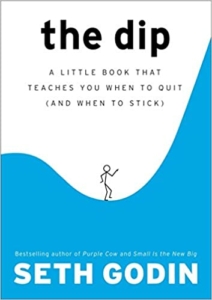What Woodpeckers Know About Blogging for Business

To hardworking, motivated people, diversification feels like the right thing do – enter a new market, apply for a job in a different area, start a new sport, observes Seth Godin in The Dip. “And yet,” the author continues, “the real success comes to those who obsess.” A woodpecker, he says, can tap twenty times on a thousand trees and get nowhere, but stay busy. Or – he can tap 20,000 times on the same tree and get dinner!
Translating woodpecking into blogging terms, Neil Patel admits that blogging isn’t for the faint at heart. One of the reasons that’s true is that “one thing Google isn’t shy about is that it rewards websites that publish regular, high-quality content that provides real value to users.”
At Say It For You, after years of being involved in all aspects of corporate blog writing and blogging training, one irony I’ve found is that business owners who “show up” with new content on their websites are rare. There’s a tremendous fall-off rate, with most blogs abandoned months or even weeks after they’re begun. Pity, because blogs are startlingly less costly than business print ads, “winning” with content, not cost, and with frequency, not size.
Not to strain a simile, healthcare professionals stress the importance of “regularity” for maintaining digestive health, exhorting us to shun sugar, processed food, alcohol and caffeine in favor of fiber. Harvard Health Letter advocates exercise, emphasizing that is must be regular.
“There’s always been a lot of debate about content quality vs. quantity and frequency in content marketing practitioner circles,” Brock Stechman writes in DivvyHQ. However, he (significantly) points out. It will be difficult to get traction with an inconsistent or slow publication schedule, and frequent, consistent publication is vital for success.
Research on several psychological phenomena supports the importance of frequency in advertising and marketing, Mark Zimmer of Zimmer Marketing explains:
- The mere-exposure effect – people show preference for that with which they are familiar.
- The frequency illusion – each time the customer is exposed to the message there ia sense of omnipresence.
- Information-gap theory – reader feels there is a gap between what we know and what we want to know.
How often should you blog? Blogtyrant.com admits the only correct answer is “It depends” on a number of factors, including your schedule, your topic, and your blog post length. You want your blog to be successful for years to come, but without burning yourself out.
The lesson woodpeckers offer to blog content marketers is consistent tapping!


Follow us online!